Best Of
Emotional Branding: A Comprehensive Guide to Lasting Customer Relationships
Article written by Kate Williams
Product Marketing Manager at SurveySparrow
26 min read
15 April 2025

60-Seconds Summary
Emotional branding 101:
Emotional branding isn’t just a buzzword—it’s how iconic brands build lasting loyalty. While traditional branding sells features, emotional branding sells feelings. It connects with customers on a deeper, human level—tapping into their values, aspirations, and identity.
In this guide, you'll learn:
- What emotional branding really means
- Why it drives higher loyalty, premium pricing, and viral engagement
- How top brands like Apple, Dove, and Nike use emotions to lead markets
- Ways to apply emotional triggers in your brand strategy—across B2B or B2C
If you want your brand to stick—not just sell—this is your blueprint.
Think about the mobile or laptop you use.
Are they simply for completing your work, or do you feel emotionally attached to the brand?
Why do you prefer purchasing your coffee from Starbucks?
Why do you like to binge-watch on Netflix? What about other streaming platforms?
Why do you shop on Amazon?
Why do you use the same brand again and again when you have a lot of other options? And what if we tell you to switch to a different brand?
When you connect with a brand on an emotional level, it isn’t easy to switch them. So they secure a permanent place in your mind and heart that it becomes hard to avoid their products. And this happens because of emotional branding.
With emotional branding, you can shape an image that appeals only to your audience base. That means everything your brand will do will evoke their emotions. It will build a sense of desire, need, fear, urgency, and admiration.
Using emotional branding, you can create more targeted products, campaigns, and services and a better ROI than any other marketing strategy. But how do you incorporate emotional branding into your business strategy? Well, read on to find that out.
What Is Emotional Branding?
Do you know that ranchers often put marks on their cattle to prove their ownership? They also mark their cows to identify the beef quality. Now, this marking process is literally known as ‘branding’.
Similarly, in marketing, the term ‘branding’ refers to a way of recognizing or identifying a business. It helps to make your business or product stand out from the crowd.
Branding is not only about identifying your business or product; it’s much bigger than that! People often assume that aligning your brand’s color, logo, and design can build a powerful brand.
Yes, it’s important to align your brand’s logo and color. But, they alone can’t make your product memorable to the consumers.
This is where emotional branding comes in. Emotional branding is the process of building a long-term, emotional connection between a customer and a product or business by triggering their emotions.
Brand engagement goes up when you’re using emotions behind them. Your customers want to connect with your product. And when you emotionally connect with your customers, they’ll remember you. They’ll come back to you again and again. .
The Science Behind Emotional Branding
Emotional branding isn’t just a marketing buzzword—it’s deeply rooted in neuroscience and psychology. Research has shown that emotions play a massive role in decision-making processes, with studies showing that emotional responses have a stronger influence on consumer intent to buy than ad content itself.
When we experience emotional reactions, our brains release neurotransmitters like dopamine (pleasure), oxytocin (trust and bonding), and serotonin (happiness) that create positive associations with brands. These biochemical responses quite literally hardwire brand preferences into our neural pathways.
According to research, emotionally engaged customers are:
3 times more likely to recommend your product
3 times more likely to repurchase
Less sensitive to price increases
Less likely to shop around
Marc Gobé first introduced the concept of emotional branding in his book Emotional Branding: The New Paradigm for Connecting Brands to People. The book’s main concept is that connections between brands and customers can be made on an emotional level. Marc suggests that to create emotional branding successfully, the brands must:
Consider their customers as people.
Provide a product that covers a basic need and fulfills customers’ expectations.
Build a relationship of trust and loyalty.
Communicate well with their audiences to build a strong relationship.
Emotional branding allows you to shape your business message and trigger the customers’ natural emotions. That means, whatever strategy your business will take from creating a logo to marketing experience, everything must target a consumer on a different emotional level. For example, it could trigger their love for your brand, provoke their desire for your products, or give them a sense of security.
Emotional Branding vs Emotional Advertising:
So, does that mean emotional branding is about making heart-touching, emotional ad campaigns? Well, certainly not! Emotional advertising is a part of your branding strategy. But for emotional branding, you have to be consistent with the rest of your brand’s image.
Everything should be on the same emotional level, from the logo, fonts, and image to the customer experience. You can reach a wide range of audiences with advertisement social media campaigns. But, with emotional branding, you’ll create a long-lasting impact on customers’ minds and lives.
Emotional Branding vs Emotional Advertising:
So, does that mean emotional branding is about making heart-touching, emotional ad campaigns? Well, not exactly! Emotional advertising is a part of your branding strategy. But for emotional branding, you have to be consistent with the rest of your brand’s image.
Everything should be on the same emotional level, from the logo, fonts, and image, right to the customer experience. You can reach a wide audiences with advertisement social media campaigns. But, with emotional branding, it's all about creating a long-lasting impact on customers’ minds and lives.
Connection Between Emotional Branding, Ethos, Pathos, And Logos
We are all aware of the great Greek philosopher Aristotle. You may wonder what Aristotle has to do with branding and marketing! Before any marketing technique, Aristotle devised three modes of persuasion that can persuade people to act. These three modes are Ethos, Pathos, and Logos.
If you can balance these three modes of persuasion, it’ll be easier to create an emotionally powerful brand.
1. Ethos: Credibility And Ethics
“Four out of five experts choose X for lasting customer relationships.”
Ethos is a mode of persuasion that appeals to the audience by focusing on credibility. The goal of ethos is to convince the audience that your product, business, or service is credible and ethical. Credibility helps audiences to respect or admire a brand. It makes your products appear trustworthy and authoritative. If your brand is credible, it becomes easier for them to purchase.
You can use the concept of Ethos for emotional branding in many ways. You can easily evoke your customers’ emotions by providing testimonials and social proofs on your site, endorsing your product by experts, and providing case studies.
For instance, Nike, one of the most popular global sports brands, has made a lifetime contract with footballer Cristiano Ronaldo. He proudly promotes the brand with the complementing slogan “just do it.” When their audience witnesses successful athletes wearing Nike products, the brand’s authority strengthens.
Also, brands build authority with their audiences by standing with social causes. They participate in charitable endeavors to spread a positive message among their consumers.
2. Pathos: Empathy
“Embrace X for a journey filled with joy, engagement, and enduring loyalty.”
Pathos is another persuasive technique you can use for emotional branding. The goal of Pathos is to appeal to the emotions, experiences, and memory of customers.
What comes to your mind if we ask you to imagine a half-eaten apple? Your mind immediately shows you Apple’s logo. When you hear the jingle “I’m lovin’ it” on TV or anywhere, you can immediately tell it’s McDonald’s advertising—ever wondered why it’s so easy to recall these brand names?
Well, the answer lies in the concept of Pathos. Pathos evokes a sense of belonging, FOMO, urgency, and other emotions to encourage customers to take action. All these brands have appealed to their audiences’ emotions by using Pathos in their emotional branding strategy.
3. Logos: Logic And Reason
“X ensures a 99.9% success rate in keeping your customers returning for more.”
Logos- Aristotle’s third mode of persuasion is the most crucial one. This strikes your consumers’ logical appeal. Logos persuades the audience by telling them why they should buy a product or connect with a brand. Showing features, facts, graphs, and statistics alone won’t help you convince the audience.
Customers want to know how your product can solve their life problems. They want to know what you can do for them. Logos help to show that reason.
For example, if Apple wants to market a new product, they’ll use logos to appeal to consumers. They might show why the features of their products (battery life, durability, user experience) are better than the rest.
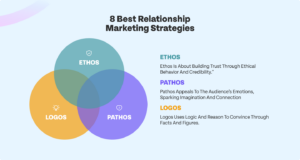
How To Create An Emotionally Effective Brand?
What’s the ultimate goal of a business? Is it making profits? Wrong!
The ultimate goal of any business is to satisfy a customer. Of course, money is needed for survival, but to build a brand, you must learn to keep customers connected. And successful emotional branding is all about keeping customers engaged and loyal to your brand or products. So, here are some ways you can create successful emotional branding.
Looking for ways to enhance your business by actively listening to your customers?
Check how Surveysparrow helps businesses with emotional branding techniques! Sign up for free and explore the emotional branding tool.
A personalized walkthrough by our experts. No strings attached!
1. Know Your Customers
How can you understand what motivates customers to purchase from a brand? You have to know them well to understand their emotions. Every business must realize its consumers’ pain points, desires, and needs. Not understanding why a customer acts in a certain way leaves room for mistakes.
During the customer journey, if a customer encounters issues, you must identify these issues. They can get close to customers by conducting surveys, online market research, interviews, etc. You have to analyze their likes, dislikes, values, and beliefs to know why and how they’re using your products or services.
Customer feedback is one of the best ways to know your customers. Using the feedback, you can understand why they purchased a certain product. How do they feel about your brand?
Whether it’s a product announcement, customer support, or a simple check-in, surveys can keep your customers connected to the brand.
You can use survey software like SurveySparrow to update your customers about your business. Using SurveySparrow’s customizable survey templates, you can create engaging surveys to evoke customer emotions.
A personalized walkthrough by our experts. No strings attached!
2. Focus On Personalization
Customers want to be in the center of a brand.
They want to feel included in every small and big decision of their favorite brand. If you can’t ensure that customers matter the most for your brand, you can’t build emotional branding successfully.
Focus on personalizing every content you publish. Whether it’s social media content or blog posts, write like a human interacting with real people. When sending emails, personalize the brand message using customers’ names, logos, fonts, logos, and colors. This will help to create a sense of credibility and trust among your audience base.
Make sure to personalize your products according to customers’ needs, not just social media campaigns or emails. If your product fits their lifestyle, pain points, and needs, they’ll become more emotionally connected with your brand.
We can take Netflix’s example here. Everything Netflix does is based on a personalized customer experience. The company uses smart algorithms to understand its customers’ preferences. They use search history, viewing data, user ratings, time, date, and even device data to personalize the recommendation engine.
Netflix never fails to use customer data to show a unique, personalized homepage for each user. They show recommendations based on user interest and experience with the platform.
3. High Customer Engagement
Constant interaction with customers can help you build a strong emotional brand. Engaging with customers through any channel or form is crucial. As per a study, only 14% of B2B marketers agreed to have a customer-centric organization rather than a product-centric one.
Instead of just promoting your product, make sure to engage with customers on a personal level. Use survey software like Surveysparrow, chatbots, conversational forms, and in-app feedback to engage with customers regularly.
One of the best examples of brand-customer engagement is IKEA. This retail giant engages with customers by offering them an online in-store experience. IKEA uses different technologies like augmented reality and video chat to offer a human connection to their customers. With IKEA’s AR app, customers can virtually use their online catalog to decide which furniture will be the right choice.
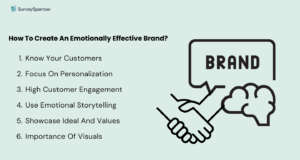
4. Use Emotional Storytelling
Stories have been a part of our life since childhood. When we hear a story, it evokes our emotions and inspiration. That’s why stories are much more effective than dry statistics, features, or facts. Incorporating stories in your products, services, or brand would be best to build effective emotional branding.
Stories can be everywhere. Your brand’s logo can contain a story. Your product’s information can contain a story. Incorporate stories to share your brand’s struggle, history, success, and values.
From social media campaigns to advertising, every bit of your brand can have a story to tell. Stories simplify every message, evoke emotions, and make your brand more real.
For example, brands like Apple and Facebook incorporated their founders’ stories into their product marketing to make the brand memorable. The story of people who were dropouts faced challenges and rejection before making it big!
5. Showcase Ideal And Values
In the era of digital advancement, brands shouldn’t shy away from sharing their ideals and values online. As per the Strength of Purpose study, when a brand is purpose-driven, the customers are
- 4 times more likely to purchase from the brand.
- 6 times more likely to stay in the brand in challenging moments.
- 4.1 times to trust the brand.
- 4.5 times more likely to recommend the brand to their close ones.
Following purposes or ideals like human rights, environmental protection, social issues, fair trade, and production can build a positive brand image.
Purpose-driven businesses can make an emotional connection with their brand. For example, Dove, despite being a soap brand, wonderfully used emotions in its brand purpose. They change the definition of cosmetic brands by advocating for people to redefine beauty.
5. Importance Of Visuals
Human beings are visual creatures. At least 65% of people are visual learners. If you want to trigger human emotions, persuade them with the right visuals.
Everything from your logo, fonts, images, typefaces, and colors plays a major role in making an impression. But make sure to use visuals with meaning or aim that aligns with your business purposes. Don’t use visuals just because it’s necessary to have them.
Leonardo Da Vinci once said, “Simplicity is the ultimate sophistication.” Don’t overthink your visuals with convoluted elements in the spirit of communicating more of your ideals. Visual content in branding thrives in simplicity and easily digestible information.
You can even use a logo maker to aid you in developing a controlled design that adheres to essential design principles without going overboard. The opportunities for simplicity in your visual content are endless.
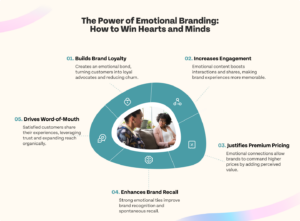
4 Benefits of Emotional Branding For Your Business
Building a brand is nothing less than science. When you look at branding scientifically, attractive design becomes less important than customers’ feelings. 76% of customers want to connect with a brand that understands their needs. That’s why it’s important to engage with your customers on an emotional level. When you engage with customers consistently, their lifetime value will increase effectively.
#1 Differentiate Your Business
Emotional branding makes your business stand out from the crowd. It gives uniqueness to your brand image and differentiates you from competitors. Having a unique brand image will clearly define your business goals.
Google, Amazon, Sony, and Netflix- these brands have built a sense of trust and loyalty among users. Because these popular brands are unique, they have crafted their designs and products well for the market. Generic products with poorly designed branding strategies won’t be able to leave an emotional impact on people.
#2 Build Human Connection
Emotional branding is about bridging the gap between your customers and the company. It allows the audience to feel emotional about your business or product. It’s not unusual for people to connect with someone or a pet. But, when it comes to connecting with a non-living thing like your company, building a human connection gets tough.
As per a survey study, 66% of people are willing to pay more to a socially responsible brand. Customers want their favorite brands to share the same value. The study also stated that 46% of customers want brands to stand for social justice issues.
Emotional branding can help shift your business approach to customers and engage with them as real people. And to build human connection through emotional branding:
- Ask yourself, what experience can you provide them? How can you engage with them to evoke emotion?
- Actively meet their expectations and needs.
- Showcase humanity by listening to their feedback. Engage with them on every platform to build a strong connection.
- 86% of customers said that authenticity is crucial to deciding which brand they like. So, make sure to be authentic to create emotional branding successfully.
- Lastly, make sure to lead with values and ideals to connect on a human level. For instance, several brands like Linkedin, Spotify, Facebook, and Twitter celebrated Pride Month with rainbow-colored logos and hashtags.
A great example of a brand using emotional branding to build human connections is Airbnb. Since it’s nearly impossible for people to enjoy vacation because of the pandemic, Airbnb offers a catalog of virtual experiences. In this virtual experience, people can attend online activities like wine tasting, learning creative drawing with experts, participating in skincare workshops, etc.
#3 Positive Brand Image
With emotional branding, you can create a positive brand image. When people purchase from you, they become familiar with what your brand stands for.
Most businesses, especially small business owners, think the brand image is about the logo. But, brand image makes the first impression on your audience base. Your audience will create a brand image from small details like website, service, employee behavior, values, product reviews, etc.
According to a study, customers are willing to spend 31% more on a brand with excellent reviews. 92% of B2B buyers said they’re more likely to purchase after reading a trusted review. On the other hand, a negative image can ruin your brand reputation. 4 out of 5 customers said they’ve changed their purchasing decision after reading negative online reviews.
#4 Increased Customer Loyalty
Emotional branding will help you increase customer loyalty with emotions. Because when you love your customers, they’ll return to your brand repeatedly. Keeping customers loyal to your brand can reduce churn and build a positive image. You can trigger emotions in your customers by delivering services and products with quality.
You must provide value first to create authority so the customers can’t look to switch your brand. Constantly check in with your customers through different social media platforms and surveys. This will help you create brand loyalty with customers.

Explore Deeper Customer Insights with SurveySparrow
A personalized walkthrough by our experts. No strings attached!
Top 5 Emotional Branding Examples
Apple’s Experience of Innovation and Community:
Apple doesn’t just sell technology; it sells an experience and a lifestyle. From the inception of the iPod to the latest iPhone, Apple’s branding has always revolved around the user experience, simplicity, and the idea of being part of something bigger—a community of innovators and trendsetters. Their sleek, minimalist design is not just about aesthetics but about evoking a sense of belonging to an exclusive club.
The emotional connection is deepened with product launches that resemble cultural events, creating anticipation and excitement. Apple’s stores, designed as open spaces for collaboration and discovery, further reinforce the emotional narrative of community and cutting-edge design. Customers don’t just buy a product; they buy into an ethos of creativity and innovation.
IKEA’s Concept of Home and Family:
IKEA’s approach to emotional branding is centered on the warmth, comfort, and joy of everyday life at home. Through clever and often humorous marketing, IKEA positions its furniture not merely as objects but as integral parts of a happy home life. Their showrooms are carefully staged to trigger imagination, inviting customers to envision their lives unfolding in IKEA-designed spaces.
The brand promotes sustainability and functionality, aligning itself with the values of affordability and care for the environment. This creates an emotional pull for customers who not only want to furnish their homes but also make conscious choices that reflect their values and aspirations for family and domestic bliss.
Coca-Cola’s “Share a Coke” Campaign:
Coca-Cola has long been synonymous with happiness and togetherness, but the “Share a Coke” campaign took this to a new level by personalizing bottles with names and phrases. This initiative turned a simple beverage into a personal gesture of connection, sparking consumers to seek out bottles with their names or those of friends and loved ones.
By doing so, Coca-Cola leveraged the power of personal attachment and shared experiences, transforming the act of drinking soda into a symbol of friendship and care. It wasn’t just about quenching thirst; it was about sharing moments, which resonated deeply with consumers worldwide.
Nike’s Empowerment Through “Just Do It”:
Nike’s iconic “Just Do It” slogan is more than a call to action; it’s an invitation to break barriers and push limits. By associating its brand with determination, perseverance, and the triumph of the human spirit, Nike inspires a sense of empowerment.
This message appeals to athletes and non-athletes alike, positioning the brand as a partner in pursuing personal goals, whether related to sports, fitness, or life’s many other challenges. The underlying emotion here is an aspiration – Nike’s branding taps into the universal desire to strive for more and to be part of a community that celebrates ambition and achievement.
Dove’s “Real Beauty” Campaign:
Dove’s “Real Beauty” campaign marked a significant shift in the beauty industry by challenging the narrow, unrealistic standards often portrayed in media. Dove celebrates the natural, diverse beauty of all women, encouraging self-acceptance and confidence.
This approach differentiates Dove from competitors and creates a supportive and inclusive brand culture. By featuring women of different ages, sizes, and ethnicities, Dove aligns itself with authenticity and self-love, fostering a loyal following that appreciates the brand’s stance on real beauty and its commitment to creating products that cater to all.
Emotional Branding Best Practices
Emotional branding is about creating a connection with your customers that goes beyond the product itself, tapping into the feelings and identities that your brand evokes. Here are best practices to ensure your emotional branding resonates and remains authentic:
- Authenticity: Be genuine in your messaging. Consumers can sense when a brand is being disingenuous. Authentic stories that align with your brand’s values resonate more deeply with audiences.
- Consistency: Ensure that your brand’s emotional message is consistent across all channels and touchpoints. This builds recognition and reinforces the emotional connection with your customers.
- Personalization: Tailor your brand experience to the individual needs and emotions of your customers. Personalization makes your audience feel understood and valued.
- Engagement: Interact with your customers to build a community around your brand. Engagement can create emotional bonds and turn customers into advocates.
- Storytelling: Use storytelling to convey your brand’s message. A compelling narrative can evoke emotions and make your brand more relatable and memorable.
- Customer-Centricity: Focus on the customer’s experience and emotions throughout their journey with your brand. This can improve customer satisfaction and loyalty.
- Empathy: Demonstrate empathy by addressing customer needs and concerns. Showing that you care builds trust and deepens the emotional link.
- Feedback Loop: Encourage and listen to customer feedback. It’s essential for understanding the emotional impact of your brand and for making improvements.
How To Measure Emotional Branding Success
While emotional branding may seem intangible, there are concrete ways to measure its effectiveness and impact on your business. Here are key metrics and methods to evaluate your emotional branding success:
1. Brand Sentiment Analysis
Monitor social media mentions, reviews, and comments to track the emotional tone of conversations about your brand. Tools like social listening platforms can help quantify positive, negative, and neutral sentiment over time.
Key metrics to track:
Sentiment ratio (positive vs. negative mentions)
Emotional language used in customer reviews
Changes in sentiment after campaigns or touchpoints
Here’s a template for you to try!
2. Net Promoter Score (NPS)
NPS measures customer loyalty by asking how likely customers are to recommend your brand to others. This metric strongly correlates with emotional connection—people rarely recommend brands they don’t feel emotionally attached to. Calculate your brand’s NPS score now.
3. Brand Association Testing
Conduct surveys asking customers what emotions they associate with your brand. Compare these associations with your intended emotional positioning to see if your branding efforts are successful.
Sample question: “When you think about our brand, which of these emotions do you feel? (Select all that apply)” followed by a list of emotions.
4. Customer Retention Metrics
Emotionally connected customers stay longer. Track metrics like for customer retention:
Customer lifetime value
Repeat purchase rate
Subscription renewal rates
Churn reduction over time
5. Price Sensitivity Measurement
Customers with strong emotional connections are typically less price-sensitive. Analyze:
Willingness to pay premium prices
Response to price increases
Purchase behavior during promotions vs. regular pricing
6. Engagement Depth
Monitor how deeply customers engage with your content and experiences:
Time spent on website/app
Content sharing rates
Comment depth and quality
Participation in brand communities
7. Brand Lift Studies
Measure changes in brand perception before and after emotional branding campaigns to quantify their impact on awareness, affinity, and purchase intent.
How Can Businesses Use SurveySparrow to Amplify Their Emotional Branding Efforts
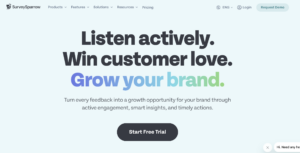
- Customizable Templates for Emotional Engagement: SurveySparrow offers a range of customizable templates that can be tailored to echo your brand’s voice and ethos, ensuring every survey reinforces your brand’s emotional appeal.
- Conversational Interfaces to Mimic Real Conversations: Its unique conversational interface can mirror human-like interactions, making respondents feel heard and valued, thereby deepening their emotional connection with your brand.
- Segmentation Tools for Tailored Emotional Insights: Utilize SurveySparrow’s segmentation tools to dissect your audience based on their responses, allowing for nuanced understanding and targeted emotional branding strategies that resonate with specific customer segments.
- Emotionally Intelligent Analytics for Actionable Insights: The platform’s analytics go beyond mere numbers, offering insights into the emotional tone and sentiment behind customer feedback, enabling businesses to fine-tune their emotional branding efforts.
- Real-Time Alerts for Immediate Emotional Connection: Instant notifications about survey responses allow businesses to act quickly, addressing any negative feedback or reinforcing positive sentiments, keeping the emotional bond with the brand strong.
- Multi-Channel Distribution for Wider Emotional Reach: SurveySparrow enables distribution across various channels—email, social media, and websites—helping to engage customers where they are most comfortable, enhancing the emotional impact.
- Net Promoter Score (NPS) Surveys to Measure Brand Loyalty: By regularly conducting NPS surveys, businesses can gauge the strength of their emotional connection with customers, identify advocates and detractors, and take action to strengthen those bonds.
- Follow-Up Feature to Show You Care: The platform’s ability to automatically send follow-up messages based on survey responses shows customers that their feedback is valued and acted upon, enhancing their emotional loyalty to the brand.
Get this Emotional Branding Template for Free.
Emotional Footprint Survey Template
Use This TemplateWrapping Up…
Customers are paramount to any brand. Appealing to their emotions is crucial for motivating them to take action. Once you realize that most purchasing decisions happen subconsciously through our feelings, it’ll be easier to build a strong emotional branding strategy. Using emotional branding techniques, dive deeper into customers’ expectations, measure their satisfaction, and align your business goals accordingly.
Truly powerful emotional branding requires a holistic approach—where every touchpoint from product design to customer service consistently evokes the desired emotional response. By understanding the psychological drivers behind consumer behavior and mapping the emotional journey of your customers, you can build connections that transcend mere transactions.
Lastly, it’s needless to say that to touch the hearts of customers, a brand doesn’t have to be famous. However, a brand has to be relatable and humanize well to make a long-lasting impression on its customers’ minds.
Remember that emotional branding is not a one-time campaign but a long-term commitment to building meaningful relationships with your audience. When done authentically, it creates a powerful competitive advantage that’s difficult for others to replicate.
Start 14 Days free trial

Kate Williams
Excels in empowering visionary companies through storytelling and strategic go-to-market planning. With extensive experience in product marketing and customer experience management, she is an accomplished author, podcast host, and mentor, sharing her expertise across diverse platforms and audiences.
Frequently Asked Questions (FAQs)
Traditional branding plays it safe; showing features, benefits, and what a product does. Emotional branding goes deeper. It taps into how your brand makes people feel. While traditional branding might say “Our laptop is fast,” emotional branding says, “This is the laptop that helps you chase your dream.” See the difference?
Absolutely! Whether you’re selling coffee or cloud software, emotions drive decisions. Even in B2B, where logic often leads the pitch, emotional connections seal the deal. At the end of the day, businesses don’t buy—people do.
Think of emotional branding as a relationship. It takes time, consistency, and trust. While some emotional campaigns might spark quick results, building a true emotional connection usually takes 1–3 years—and the strongest brands have been at it for decades. Patience pays off.
It depends on your brand and audience—but emotions like joy, trust, and anticipation are crowd favorites. That said, don’t sleep on surprise, nostalgia, or even fear (used responsibly).
The key being high-arousal emotions drive buzz, while steady ones like trust build loyalty over time.
Start by listening. Literally.
- Run surveys and interviews—ask people how your product makes them feel
- Monitor social chatter—what language are they using?
- Study the competition—what emotional gap can you fill?
- Dive into your audience’s values, habits, and aspirations
- Experiment, track, tweak, repeat
Not if it’s real. Emotional branding only works long-term when it’s authentic and aligned with your core values. It’s not about playing with feelings—it’s about creating shared meaning. Manipulation happens when there’s no substance behind the story. Keep it real, and you’re golden.
Related Articles
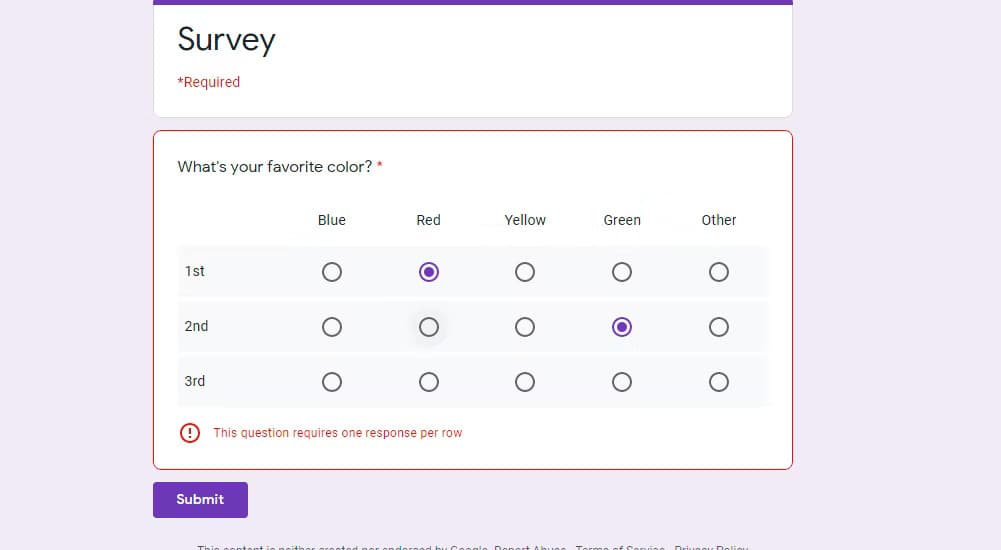
Best Of
How To Add Tables In Google Forms?
10 MINUTES
25 July 2022

Customer Experience
Customer Experience Dashboard: How to Use It for Sharper Insights
7 MINUTES
20 June 2023

Knowledge
IoT Data Collection and Visualization: How to Use it to Understand Big Data
6 MINUTES
30 May 2023

Compare
Qualtrics vs Google Forms: Which Is Right for You?
10 MINUTES
30 May 2023
